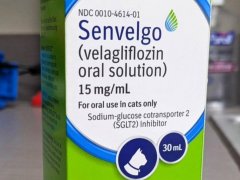
Marbofloxacin, commonly referred to by the brand name Zeniquin, is an antibiotic commonly used in veterinary medicine. In this article, you’ll learn how marbofloxacin for cats works, the types of infections it may be used for, the side effects to look for, and some commonly asked questions.
Marbofloxacin for Cats Overview

About Marbofloxacin for Cats
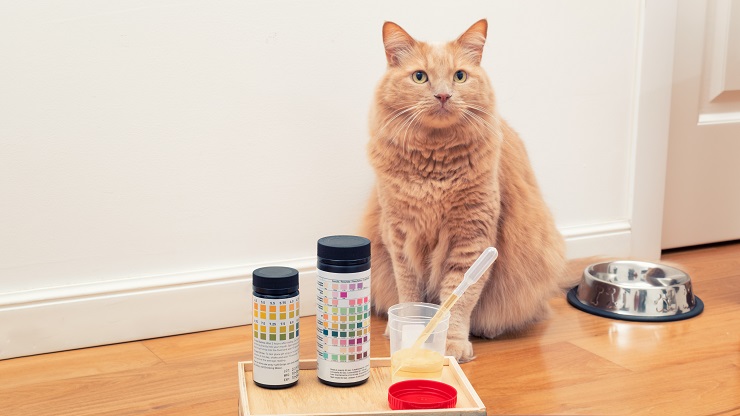
Marbofloxacin is used to treat bacterial infections in cats, such as urinary tract infections.
Marbofloxacin is an antibiotic in the fluoroquinolone class. It is a third-generation, concentration-dependent, bactericidal fluoroquinolone.
Being a concentration-dependent antibiotic means that it must reach a certain high concentration within the target tissue that is infected (like skin, lungs, etc.) in order to kill bacteria.
A bactericidal antibiotic is one that actively kills bacteria. This is in contrast to bacteriostatic antibiotics that focus more on suppressing bacterial growth.
Marbofloxacin kills bacteria by inhibiting bacterial DNA synthesis, leading to bacterial death within 20-30 minutes.
Marbofloxacin is a very broad-spectrum antibiotic, meaning that it has the ability to kill many different bacteria types. However, no antibiotic can kill all types of bacteria. Some bacteria that it is less effective against include Strep species of bacteria and anaerobic bacteria (those that do not require oxygen to survive like Clostridia bacteria).
Like most antibiotics, marbofloxacin is also ineffective against viral, protozoal, and fungal infections.
Marbofloxacin is considered a higher-end antibiotic. This means, that it is best to use it only where another antibiotic has been unsuccessful. For more complete antimicrobial coverage, it may be paired up with other antibiotics that do treat Strep bacteria and anaerobic bacteria, like clindamycin or amoxicillin.
Also Read: Bacterial Infections In Cats: Causes, Symptoms, & Treatment
What Does Marbofloxacin Do for Cats?

Marbofloxacin for cats may be used for a variety of bacterial infections. These include those of the skin, respiratory tract, and urinary tract. In cases where Strep bacteria and anaerobic bacteria are present, its close cousin pradofloxacin may be used instead, which has enhanced activity against those types of bacteria.
Marbofloxacin for cats is FDA-approved for the treatment of infections that are susceptible to it. Ideally, this requires a bacterial culture and sensitivity to be performed. This is most commonly the case with urinary tract infections and skin infections due to the relative ease of collecting a sample.
However, veterinarians may also commonly prescribe an antibiotic based on the knowledge of bacteria most likely present within a certain tissue or body system, and the classes of antibiotics those bacteria have the most susceptibility to.
Also Read: 10 Subtle Signs Your Cat May Be Sick
Side Effects of Marbofloxacin
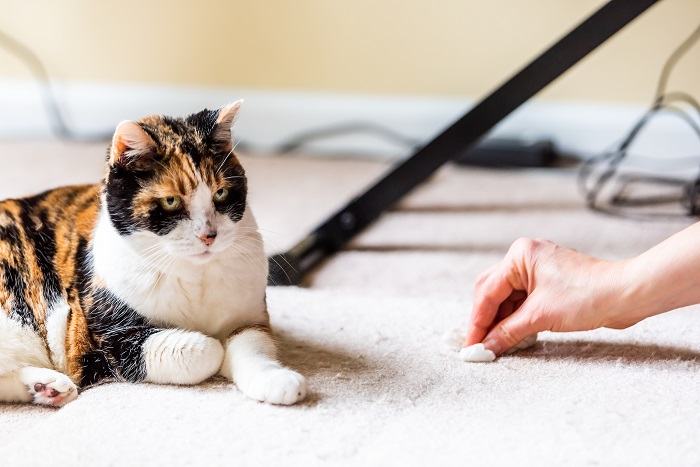
Most adverse effects of marbofloxacin for cats are mild, although GI upset is one of the more common ones.
Generally, adverse effects associated with marbofloxacin for cats are limited to signs of gastrointestinal distress. This includes vomiting, diarrhea, and a decrease in appetite. These signs can occur with any antibacterial and are not unique to marbofloxacin.
Fluoroquinolones in general have the potential to cause cartilage erosions in the weight-bearing joints of immature growing animals. This generally makes them unsafe for any young, growing cat younger than one year old.
Pradofloxacin, another fluoroquinolone, is approved for use in cats over 12 weeks of age and may be safer for younger cats.
Marbofloxacin for cats may rarely cause overstimulation of the central nervous system. It should be used with caution in cats with seizure disorders.
Because it is metabolized and excreted by the liver and kidneys, marbofloxacin may require some dosage adjustment and cautious use in cats with liver or kidney dysfunction. This is to prevent drug accumulation. In these cases, the interval between doses of the drug may be extended.
Fluoroquinolones in general may increase sunburns in cats during exposure to the sun. Prolonged sun exposure of bare or thinly-haired skin areas should be avoided while your cat is taking it.
Also Read: Common Skin Problems In Cats: Causes and Treatments
Enrofloxacin, a different fluoroquinolone, has been documented to cause ocular toxicity and subsequent blindness in cats when used at higher doses. Some reports of feline blindness while on marbofloxacin have been reported to the FDA. But unlike with enrofloxacin, no cause-effect relationship has been established. Higher doses of marbofloxacin for cats should still be used carefully.
With overdoses, the most common effects reported in cats included increased salivation/drooling, vomiting, and redness in the tips of the ear flaps (pinnae).
There are several drugs that should be used cautiously with marbofloxacin. Always make sure to let your veterinarian know of all drugs or medications your kitty is currently taking when starting marbofloxacin.
If you are ever concerned that your cat may have developed side effects while using marbofloxacin, or if an overdose is suspected, make sure to contact your veterinarian, the ASPCA Animal Poison Control Center (1-888-426-4435), or Pet Poison Helpline (1-855-764-7661) immediately for further advice.
Also Read: Poisoning In Cats: Causes, Symptoms, and Treatment
Marbofloxacin Dosage
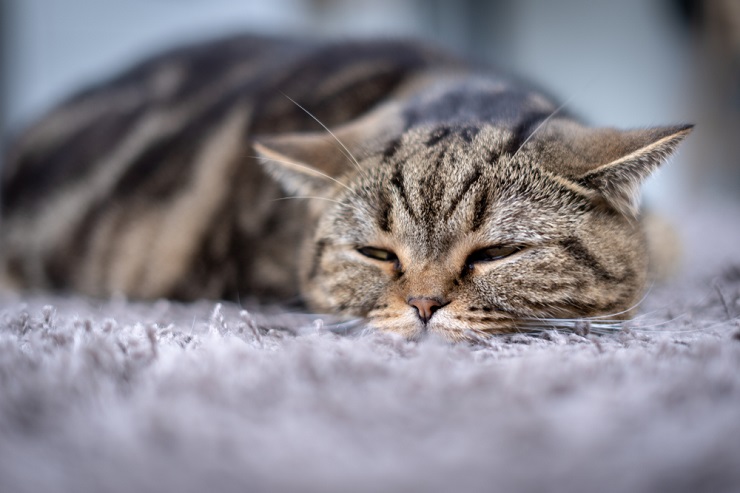
Dosing of any medication for cats should be prescribed by a veterinarian and followed closes for your cat’s health and well-being.
FDA-approved uses of marbofloxacin for cats are primarily classified as skin and soft tissue infections and urinary tract infections. For each, the dosage is 2.75- 5.5 milligrams per kilogram every 24 hours.
The length of time marbofloxacin is continued can be highly variable. Some infections may only require up to 5 days of use, while others may require 30 days or longer.
Because the variability in dosing marbofloxacin for cats depends on the infection being treated (and whether a highly resistant bacteria strain is being treated), it is extremely important to follow your veterinarian’s instructions and to never stop an antibiotic before the prescribed length of time is finished. This is true even if it appears that your cat’s signs of illness have resolved.
Also Read: Cat Vaccinations: What You Need To Know?
Conclusion
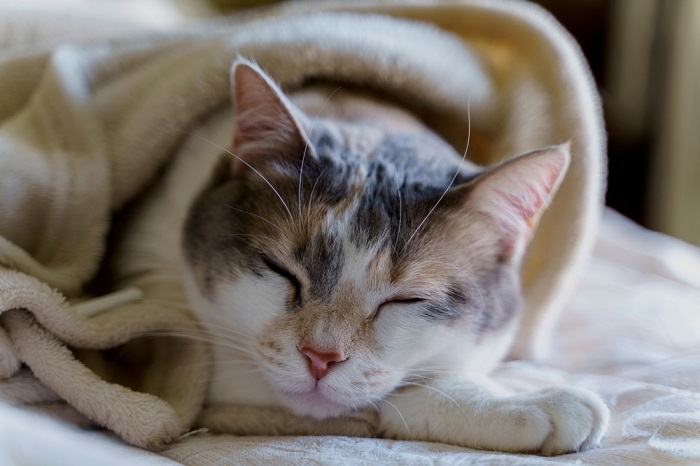
Marbofloxacin is a very useful and generally safe antibiotic to use in cats. Alternative antibiotics are best considered for very young animals. Because marbofloxacin may be used more often as a second-line choice or in cases of resistant bacterial infections, always make sure to follow a veterinarian’s guidance on dosing.
Also Read: Food Allergies In Cats: Symptoms, Causes, Diagnosis & Treatment
Drug Dosing Disclaimer: We are only able to provide doses for medications that are FDA approved for use in cats and only as the label guidelines dictate. For medications that are used off-label we can only provide guidelines and safety information for use. Safe and appropriate dosing for off-label medications can only be determined by a primary care veterinarian.
We encourage you to work with your veterinarian to determine if a particular medication is appropriate for your cat. Changing or adjusting a dose for your cat on your own without consulting with a veterinarian can carry risk. We do not encourage use of medications prescribed for human use in pets without first consulting with a primary care veterinarian.
Frequently Asked Questions
What is Marbofloxacin used for in cats?
Marbofloxacin is an antibiotic that is used in cats for many different types of infections. Primarily it is used for infections of the skin, urinary tract, and other soft tissues.
Marbofloxacin is only effective against bacterial infections and cannot be used for fungal, viral, or protozoal infections.
What are the side effects of marbofloxacin in cats?
Most side effects reported are with the digestive tract, like vomiting, diarrhea, and poor appetite.
With the possible exception of pradofloxacin, the fluoroquinolone class of antibiotics that includes marbofloxacin should not be used in cats less than one year of age, due to its erosive effects on growing cartilage.
While rare, blindness from higher doses of marbofloxacin has been reported to the FDA. However, no cause-effect relationship has been established, as with enrofloxacin (Baytril). This is thought to be a very uncommon occurrence and likely mitigated with using lower effective doses.
Fluoroquinolones can also lead to hypersensitivity to sunlight, increasing the risk of sunburn for hairless or thinly-haired cats..
There can be some drug interactions with marbofloxacin when used with other medications. Most notably when used with cyclosporine (Atopica), stress on the kidneys is much higher. Always make sure your veterinarian is aware of any other medications your cat is taking before starting marbofloxacin.
Lastly, fluoroquinolones should be used cautiously in pets with seizure disorders, as they can uncommonly cause excitement of the central nervous system.
What type of antibiotic is marbofloxacin?
Marbofloxacin is a fluoroquinolone antibiotic, which is a class of bactericidal, concentration dependent antibiotics.
Fluoroquinolones can be used to treat a variety of bacteria and bacterial infections, though they have limited effect against infections caused by Strep bacteria as well as anaerobic bacteria.
How much Zeniquin can I give my cat?
The FDA-approved labeled dose for Zeniquin, which is the most common brand for marbofloxacin, is 2.75 milligrams per kilogram to 5.5 milligrams per kilogram. While this dose is fairly standard for all infections, the length of time this antibiotic is used varies.
It is extremely important to always check the proper dosing of any antibiotic with your veterinarian. Do not start an antibiotic without confirmation through a veterinary exam and do not discontinue an antibiotic prior to the end of its prescribed duration.


